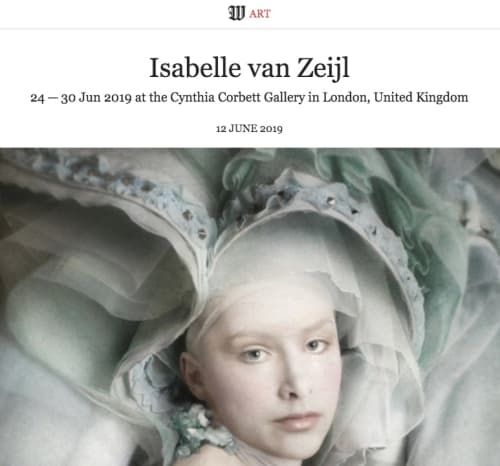In a contemporary art world that condemns beauty as camouflage for conceptual shallowness, championing high aesthetics is nothing short of rebellion. Van Zeijl takes female beauty ideals from the past, and sabotages them in the context of today.
As a women she experiences prejudices against women; misogyny in numerous ways including sex discrimination, belittling/violence against women and sexual objectification. Van Zeijl aestheticises these prejudices in her work to visually discuss this troubling dichotomy, presenting a new way of seeing female beauty. An oppressive idealisation of beauty is tackled in her work through unique female character and emotion.
Van Zeijl is invested in her images. By using subjects that intrigue and evoke emotion, she reinvents herself over and over and has created a body of work to illustrate these autobiographical narratives. Her work takes from all she experiences in life - she is both model, creator, object and subject. Going beyond the realm of individual expression, so common in the genre of self-portraiture, she strives to be both universal and timeless, with a subtle political hint.
At first glance, one might mistake van Zeijl’s portraits for subversive portrayals of noblewomen painted by Dutch Golden Age Masters. Through the exploration and manipulation of the visual vocabulary of the past and the implementation of modern photographic technology, her work possesses a timeless beauty, transcending the boundaries of epoch and media.
This new series is inspired by the relationship between humanity and nature. Acknowledging the feminine life-cycle, she allows her practice to evolve as nature takes its course and offers an alternative concept of beauty; symbolising the reinvention of the self. This series is a tribute to the natural change of life – translating natural beauty inherent in death and decay.
Her love for nature and metamorphosis is also identifiable in the rebellious way she reshapes the dresses of well-known fashion designer Claes Iversen, whose designs she sabotages into new forms. The embroidered flowers on the body indicate the process of our natural and instinctive need to grow and continually progress. This illustrates the transformation from one phase of life to another; including the metamorphosis of a child into a woman. Transformation is a true and lasting change, however, is not a once-in-a-lifetime achievement, but rather a means by which we move forward, towards wholeness. The goal is to express this evolution through visual art.

